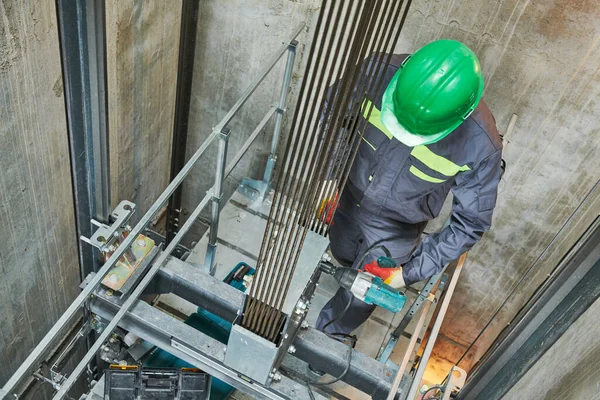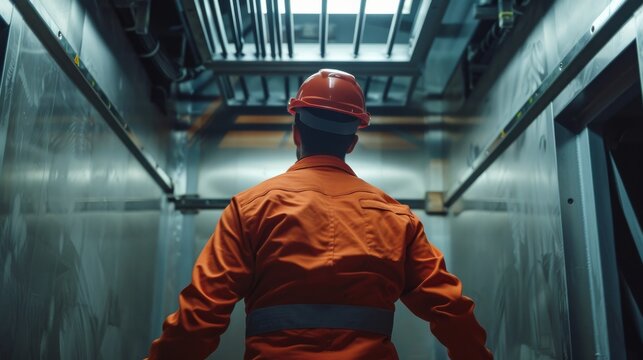Exploring the Comprehensive Steps Required for Lift Maintenance
In the world of building maintenance, ensuring the correct functioning and safety of lifts is paramount. The complexity of elevator systems needs a careful approach to upkeep. From regular assessments to critical modernization strategies, an alternative sight of maintenance is essential. However, in the ever-evolving landscape of lift innovation and security standards, there are thorough measures that must be meticulously followed to assure optimum performance and conformity. By dealing with vital elements such as proactive upkeep schedules, security checks, and emergency situation preparedness, a complete understanding of the ins and outs involved in lift maintenance can cause improved efficiency and security.
Regular Inspections
When it pertains to making sure the longevity and security of your lift system, normal examinations are paramount. These regular checks play a critical role in determining any type of potential issues prior to they rise right into major issues, making certain the secure and smooth operation of the lift. By performing regular assessments, upkeep groups can proactively deal with damage, defective components, or any other concerns that might jeopardize the lift's performance or security.
During these examinations, educated specialists thoroughly check out different elements of the lift system, including mechanical components, electrical systems, safety and security attributes, and general architectural integrity. By spotting and addressing concerns early on, these assessments aid protect against expensive repair services, downtime, or safety hazards, ultimately extending the life-span of the lift system and ensuring the health of its users.
Positive Maintenance Schedules
Implementing aggressive maintenance routines is crucial for making the most of the efficiency and long life of lift systems. By adhering to a proactive upkeep method, lift proprietors can address possible issues prior to they rise into significant issues, eventually decreasing downtime and pricey repair services.
A well-structured aggressive upkeep timetable should detail particular tasks, regularities, and responsible personnel. When producing these routines to ensure the lift runs securely and successfully, it is vital to comply with maker referrals and industry criteria. In addition, documenting upkeep tasks and keeping thorough documents can provide useful insights into the lift's performance in time, assisting in making and recognizing fads notified maintenance choices.

Safety And Security Compliance Checks
Guaranteeing safety and security compliance via extensive checks is vital in keeping lift systems' integrity and safeguarding customer well-being. Safety and security conformity checks involve an extensive analysis of numerous elements, including electrical systems, mechanical components, emergency situation brakes, doors, and other critical safety and security functions. These checks are important to identify any type of prospective risks or malfunctions that can compromise the lift's operation and placed individuals at threat.
Normal safety conformity checks need to be performed by qualified service technicians in adherence to sector laws and standards. These checks aid in identifying issues beforehand, permitting timely other repairs and precautionary upkeep procedures to be applied. Moreover, keeping detailed records of safety compliance checks is vital for tracking the lift system's efficiency in time and demonstrating conformity with safety and security regulations.
Equipment Upgrades and Innovation
Enhancing lift systems through equipment upgrades and innovation is essential for enhancing efficiency and security requirements in vertical transportation. As modern technology advancements, older lift systems might come to be obsolete, bring about decreased dependability and possible security risks. By buying equipment upgrades and innovation, building proprietors can make sure that their lifts meet existing industry standards and guidelines.

Along with operational advantages, equipment upgrades and innovation tasks can additionally boost the visual appeals of the lift, giving a much more attractive and modern experience for passengers. Ultimately, investing in lift upgrades and modernization is a positive method towards guaranteeing the durability, security, and efficiency of vertical transportation systems.
Emergency Situation Readiness Planning
An efficient emergency situation readiness strategy is important for guaranteeing the safety and quick response in instance of unexpected occurrences including lift systems. Emergency situation preparedness planning for lift systems involves an organized technique to minimize threats, make certain guest safety, and decrease downtime throughout emergencies.
Key parts of an emergency preparedness strategy for lifts include clear interaction procedures, normal training for lift operators on emergency situation procedures, and regular drills to evaluate the efficiency of the plan. lift and engineering services. Furthermore, the strategy should lay out certain roles and obligations for all stakeholders involved, consisting of structure monitoring, maintenance check it out workers, and emergency situation -responders
In the event of a lift breakdown or entrapment, having a well-defined emergency plan can aid in working with a effective and punctual feedback to guarantee the safety and security and well-being of guests. Prompt communication, accessibility to emergency devices such as communication devices and emergency illumination, and understanding of emptying procedures are crucial aspects of a comprehensive emergency situation preparedness strategy for lift systems. By focusing on emergency situation preparedness planning, structure managers can boost the total safety and security and dependability of their lift systems.
Verdict
In conclusion, the extensive actions required for lift maintenance include regular assessments, positive maintenance schedules, security compliance checks, tools upgrades and innovation, and emergency preparedness preparation. These procedures are necessary for ensuring the safety, integrity, and effectiveness of lifts in various setups. By carrying out these steps, lift owners can minimize the danger of crashes, expand the lifespan of their devices, and follow industry guidelines.

During these examinations, educated experts completely check out various facets of the lift system, consisting of mechanical components, electrical systems, security attributes, and overall structural integrity.Ensuring safety conformity via thorough checks is vital in keeping lift systems' reliability and protecting individual wellness. Keeping thorough records of safety and security conformity checks is important for tracking the lift system's efficiency over time and showing compliance with security policies.
By prioritizing emergency situation readiness preparation, structure managers can improve the general safety and security and integrity of their lift systems.